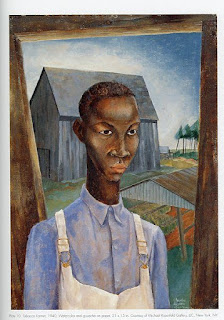In 1915 and 1916, natural disasters in the south put Black workers and sharecroppers out of work. Additionally, during and after World War I, immigration to the United States fell, and northern recruiters headed south to entice Black workers to their companies.
By 1920, some 300,000 African Americans from the South had moved north, and Harlem was one of the most popular destinations for these families. This was the first Great Migration, seen in photographs, art, poetry and music. Many African Americans moved to industrial cities; their children were born into a world that was different then those of previous generations, shifting from more rural to urban communities which inherently created the rise of a new black identity. The Harlem Renaissance was a period of rich cross-disciplinary artistic and cultural activity among African Americans between the end of World War I (1917) and the onset of the Great Depression and lead up to World War II (the 1930s). The largest concentration of African Americans who migrated during the Great Migration moved to Harlem. From the 1910s to mid-1930s, the neighborhood of Harlem in New York City became a hub of African American culture, with an explosion of literature, music, theater, and the arts. This time is considered a “golden age” in African American culture.
Artists, musicians and writers were telling a specific story about the working person, survival, the environments they existed in and the multiple aspects of self that were contained in each person's experience: artists in this time were illustrating the struggles that Black Americans face.
Art Assignment: Tell me what you see - coloring/creating our landscape.

































No comments:
Post a Comment